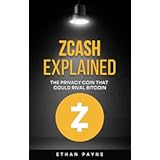The evolution of digital currencies presents a complex landscape, often leading to confusion for even seasoned participants. As the accompanying video succinctly illustrates, the narrative of Bitcoin diverges sharply after 2017, giving rise to two distinct cryptocurrencies: Bitcoin (BTC) and Bitcoin Cash (BCH). Understanding this fundamental fork is crucial for anyone engaging with the broader blockchain ecosystem, particularly given their differing approaches to scalability, utility, and the original vision of peer-to-peer electronic cash.
Deconstructing the 2017 Bitcoin Fork: A Matter of Scalability
The 2017 split was not a random event; rather, it was the culmination of a long-standing and often contentious debate within the Bitcoin community regarding scalability. Bitcoin’s original design, while revolutionary, imposed a 1 MB block size limit. While sufficient in its early days, this limit eventually became a bottleneck as transaction volume increased, leading to higher transaction fees and slower confirmation times on the BTC network. The core philosophical disagreement centered on how best to scale the network to accommodate global demand.
The Divergent Paths: BTC’s Layer-2 Focus vs. BCH’s On-Chain Expansion
One faction, which ultimately retained the ‘Bitcoin’ ticker (BTC), advocated for a “Layer 2” scaling strategy. This approach involves processing a significant portion of transactions off the main blockchain, using protocols such as the Lightning Network, with only final settlements recorded on the main chain. Proponents of BTC’s path argue that this preserves the security and decentralization of the base layer, positioning BTC primarily as a “store of value” or digital gold, rather than a system for everyday micropayments. Consequently, the BTC network has seen its average transaction fees fluctuate significantly, often reaching several dollars or even tens of dollars during periods of high demand, making small transactions economically impractical for many users. Data from blockchain explorers frequently highlights periods where the median BTC transaction fee surpasses the actual value being transferred for smaller amounts.
In stark contrast, the Bitcoin Cash (BCH) faction adhered to the original vision of Bitcoin as a fast, low-cost “electronic cash system.” Their solution to the scalability challenge was direct and on-chain: increasing the block size limit. Initially raising it to 8 MB and subsequently to 32 MB, BCH significantly expanded its network’s transaction processing capacity. This strategic decision ensures that transactions can be processed directly on the blockchain with minimal fees, typically fractions of a cent, regardless of network congestion. This commitment to on-chain scaling positions BCH as a viable medium for daily transactions, micro-payments, and remittances, aligning closely with the foundational whitepaper’s intent for peer-to-peer digital cash.
Bitcoin Cash: Embracing Programmable Money and Decentralized Innovation
The video highlights a critical distinction: while BTC’s development emphasis shifted away from its roots as programmable money, Bitcoin Cash has continuously evolved to explore the full frontier of what a decentralized, peer-to-peer digital currency can achieve. This proactive development has culminated in a robust ecosystem for advanced functionalities, transforming BCH into a truly programmable money platform.
Native Smart Contracts on BCH: Efficiency and Decentralization
Unlike some platforms that rely on a separate virtual machine (like Ethereum’s EVM) for smart contract execution, Bitcoin Cash leverages and enhances Bitcoin’s native Script language for on-chain smart contracts. This approach, utilizing OP_CODES (operation codes) directly, allows for the creation of complex conditional transactions without the overhead or potential attack vectors associated with a full virtual machine. This means smart contracts on BCH are inherently simpler, more efficient, and integrate seamlessly with the base layer’s security model. Examples of native smart contract applications include escrow services, multi-signature wallets, payment channels, and advanced token functionalities, all executed directly on the blockchain, ensuring transparency and immutability.
Tokens and NFTs: Expanding Digital Asset Horizons with CashTokens
The journey of digital assets on Bitcoin Cash began with protocols like the Simple Ledger Protocol (SLP), which enabled the creation of fungible and non-fungible tokens. However, the ecosystem has recently undergone a significant upgrade with the activation of CashTokens. This protocol upgrade brings native, on-chain token functionality directly into the BCH transaction format, enhancing security, interoperability, and user experience for all token-related operations.
With CashTokens, developers can now deploy a wide array of digital assets:
- Fungible Tokens: Representing stablecoins, utility tokens for decentralized applications (dApps), community currencies, or even digital shares. These tokens can be transferred and exchanged with the same speed and low fees as BCH itself.
- Non-Fungible Tokens (NFTs): Unique digital assets used for digital art, collectibles, gaming items, intellectual property rights, or digital identity. CashTokens facilitate the creation and management of NFTs directly on the BCH blockchain, ensuring true ownership and decentralized provenance.
- Decentralized Autonomous Organizations (DAOs): CashTokens can be used for governance, allowing token holders to vote on proposals and steer the direction of decentralized projects directly on-chain.
The on-chain nature of these tokens means that their existence and transfers are secured by the same robust mining network that secures Bitcoin Cash, providing a high degree of trustlessness and resistance to censorship. This contrasts with off-chain or federated solutions for token management, which can introduce additional points of failure or centralization.
The Growing BCH Smart Contract Ecosystem
As the video aptly concludes, the BCH on-chain smart contract ecosystem is rapidly gaining attention and steam. Developers are increasingly recognizing the advantages of a network that offers high throughput, extremely low transaction fees, and native token capabilities without compromising decentralization. This combination makes Bitcoin Cash an attractive platform for building decentralized finance (DeFi) applications, social media platforms, gaming environments, and innovative payment solutions that were simply not feasible on the BTC chain due to its inherent design limitations.
The commitment to continued innovation and adherence to the original vision of peer-to-peer electronic cash ensures that Bitcoin Cash remains a powerful contender in the race to deliver truly useful, scalable, and decentralized digital money for the global population.
Mining for Answers: Your Bitcoin Cash Questions
What is Bitcoin Cash (BCH)?
Bitcoin Cash (BCH) is a cryptocurrency that was created in 2017 after a split from Bitcoin. Its main goal is to be a fast and low-cost digital cash system for everyday transactions.
Why did Bitcoin split into Bitcoin (BTC) and Bitcoin Cash (BCH) in 2017?
The split occurred due to a disagreement within the Bitcoin community about how to increase the network’s capacity to handle more transactions (scalability). Bitcoin Cash chose to increase its block size to process more transactions directly on the blockchain.
How is Bitcoin Cash (BCH) different from Bitcoin (BTC)?
Bitcoin Cash (BCH) focuses on providing very low transaction fees and faster processing for daily payments by having a larger block size. Bitcoin (BTC) typically has higher transaction fees and is often used more as a digital store of value.
Can Bitcoin Cash be used for things other than just sending money?
Yes, Bitcoin Cash supports advanced features like native smart contracts and the creation of digital tokens, including NFTs, using a protocol called CashTokens. This allows for building decentralized applications and more complex functionalities.







